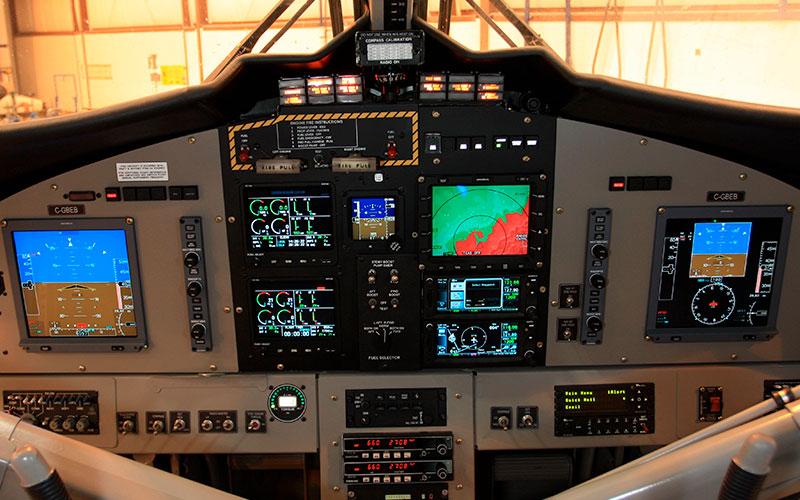It may appear that Twin Otters and autopilots don’t mix. That would be the conclusion you would come to looking at a survey of the number of Twin Otters with an installed autopilot. So what is the history and why do operators shun autopilots in the Twin Otter?
The first production aircraft left the Downsview factory with an option for the Honeywell H-14 autopilot. This system used large pneumatic servos to control the aircraft. This was a popular option at the time however as the aircraft and autopilot aged the maintenance involved in keeping the system serviceable resulted in many operators disabling or removing the system. Other approved autopilot options followed, the Bendix M4-C, Collins APC-106 both these systems while having dispensed with the pneumatic systems and being fully electric still required regular scheduled maintenance to keep them airworthy, the regular overhaul of the servo’s being particularly onerous.
The last autopilot system introduced by DeHavilland was the Collins APS-65. Introduced in 1989 the APS-65 was one of the last analog autopilots designed prior to the shift to digital. This highly capable autopilot had one main drawback, it was hugely expensive and thus not a popular upgrade or option.
For operators requiring an autopilot, a retrofit autopilot was introduced by S-TEC, the System 65, this is a basic two-axis autopilot a lot less capable than the APS-65 but at a fraction of the cost. The System 65 has become the “go-to” autopilot for operators who need an autopilot since it was first certified in the
Twin Otter 25 years ago.
New state-of-the-art retrofit autopilots are being certified in many different airframes at an incredible rate.
Manufactures like Avidyne, Garmin and Genesys (S-TEC) are regularly expanding their approved model lists. The capabilities of the new digital autopilots compared to their 50 year old predecessors is vast, modern autopilot do much more than keeping an aircraft on a preset heading and altitude. They can almost fly the aircraft independently from take-off to landing. That capability should not be taken lightly. A pilot must still be completely aware of exactly what it is the autopilot system is or isn’t doing.
So why are these maintenance free, inexpensive, multi-function, safety enhancing autopilots still missing from Twin Otters?
It appears we have a chicken and egg situation here, no autopilot manufacturer is investing in a Twin Otter approval because there is no perceived demand among operators, but there is no demand because there are no systems available.
So who will break this impasse, which manufacturer will be the first to follow the “if you build it they will come” philosophy?
Well, the answer is Genesys Flight Systems who will be certifying their 3100 digital autopilots on one of Rocky Mountain Aircraft’s Twin Otters. Installation and approval are expected by the summer of 2020. A full review of the installed system, its performance and capabilities will be posted on this blog. Stay tuned.
